A few weeks ago, three clients asked us for SEO summaries on the same day. At first, it felt routine, just open Google Search Console, pull the numbers, and send an update. But as we got into it, we realized how much time and effort each report actually demanded. We had to switch between accounts, export raw performance data, clean it up, make sense of what the metrics were telling us, and then rewrite it all in a way the client could actually understand and use. We weren’t analyzing or thinking strategically; we were just repeating the same mechanical steps over and over, slowly and without much value added.
By the time we finished the third report, we had spent close to three hours on a task that looked almost identical across all three clients. That’s when we stopped and asked ourselves a simple question: if this process barely changes, why are we still doing it by hand?
So we decided to build our own tool. It connects directly to GSC, extracts the key performance metrics, runs them through Claude AI for interpretation, and gives us a clean, strategic summary of what’s working, what’s not, and what to focus on next. Now, reports that used to take hours are done in less than five minutes. The clients get clearer insights, and our team gets those hours back to focus on actual growth work that moves the needle.
The Internal System That Replaced Our Manual SEO Workflow
Instead of buying yet another tool, we built our own.
Our internal system connects directly to Google Search Console, pulls core metrics, sends the data to Claude AI, and returns a client-ready summary that highlights what’s working, what’s not, and what to fix next.
The results were immediate. Reports that used to take us hours now get done in under five minutes. We save 8 to 10 hours every week across the team. Clients receive faster, clearer updates. And perhaps most importantly, even teammates without SEO experience can instantly understand the insights and act on them. It’s like giving everyone on the team their own part-time SEO strategist without adding any overhead.
The Problem with GSC and Reporting Tools
Google Search Console gives you a lot of data like clicks, impressions, CTR, queries but no real direction. You’re left with numbers, and it’s up to you to figure out what matters, what to fix, and what to focus on. Switching between accounts takes time, and explaining those numbers to someone else takes even longer. We tried a bunch of tools. Some were simple dashboards. Others were full analytics platforms. But none of them fit. Most didn’t connect properly with GSC. Some just showed graphs without any useful insight. A few were so complex they added more work instead of saving time.
So we built something for ourselves. A tool that actually fits how we work. Here’s the workflow.
Our GSC Reporting System, Step by Step
STEP 1. Secure GSC Access via Google Cloud
We spun up a project in Google Cloud, enabled the Search Console API, and created credential files. By adding our service account email to each client’s GSC property, we enabled direct, secure access to their performance data.

STEP 2. Built with Flask for a Lightweight Front-End
We used Flask, a flexible Python web framework, to build a clean and minimal front-end. The dashboard was designed with consistency across views, allowing users to input domain details, fetch data, and generate summaries without friction. We kept the styling simple so that anyone technical or not could navigate and understand it easily.
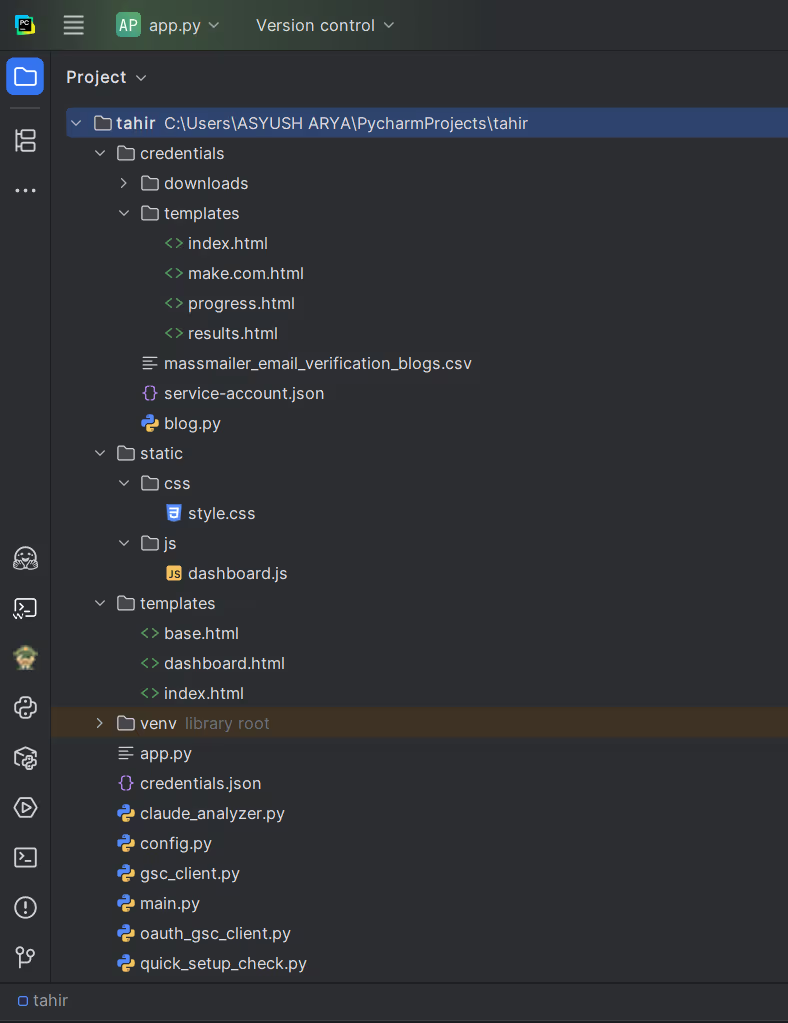
STEP 3. Pulled Key GSC Metrics via Python
We used Python scripts to fetch:
- Total clicks
- Impressions
- Click-through rate
- Average position
- Top queries
All data was piped into our dashboard for real-time visibility.
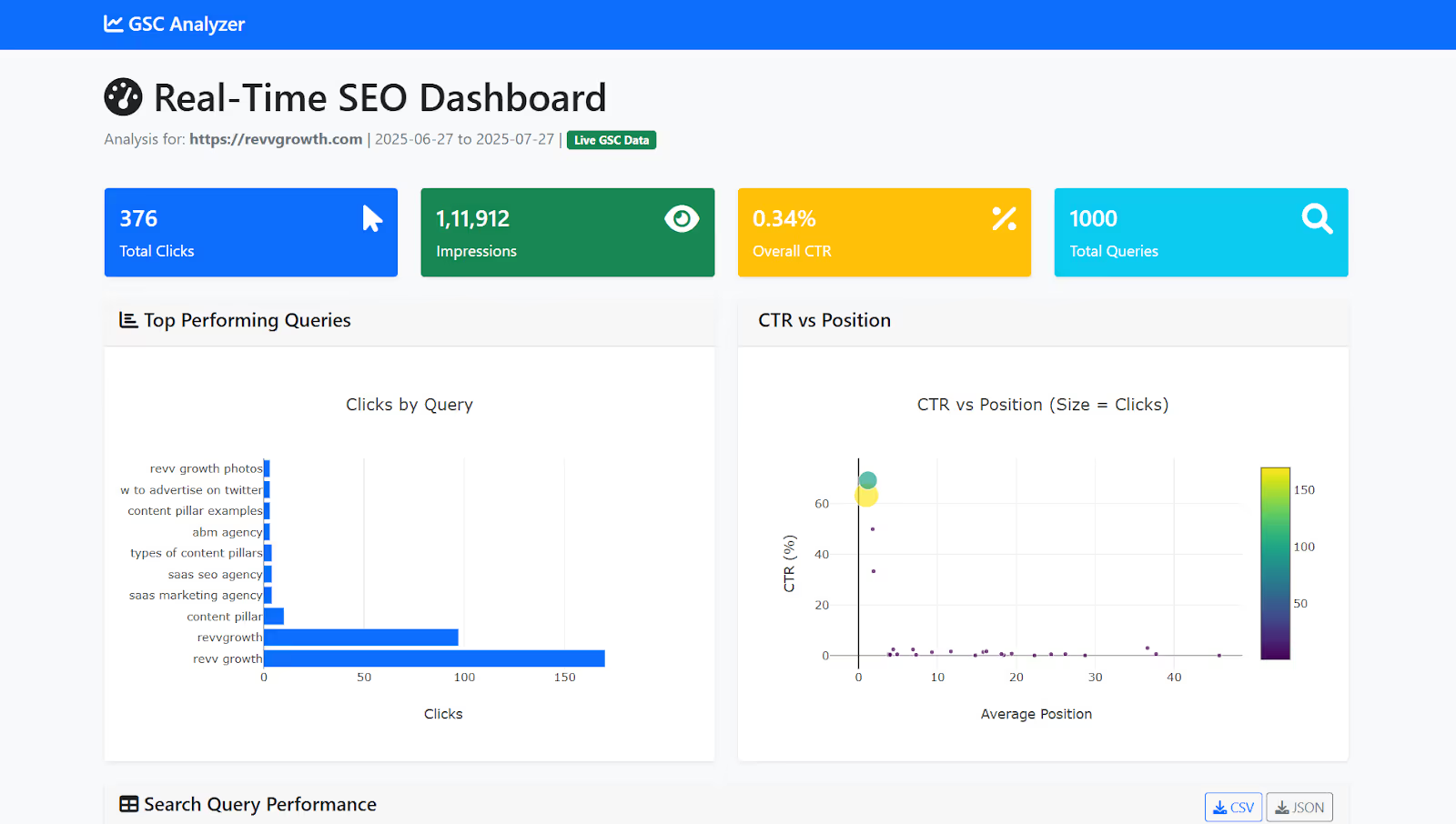
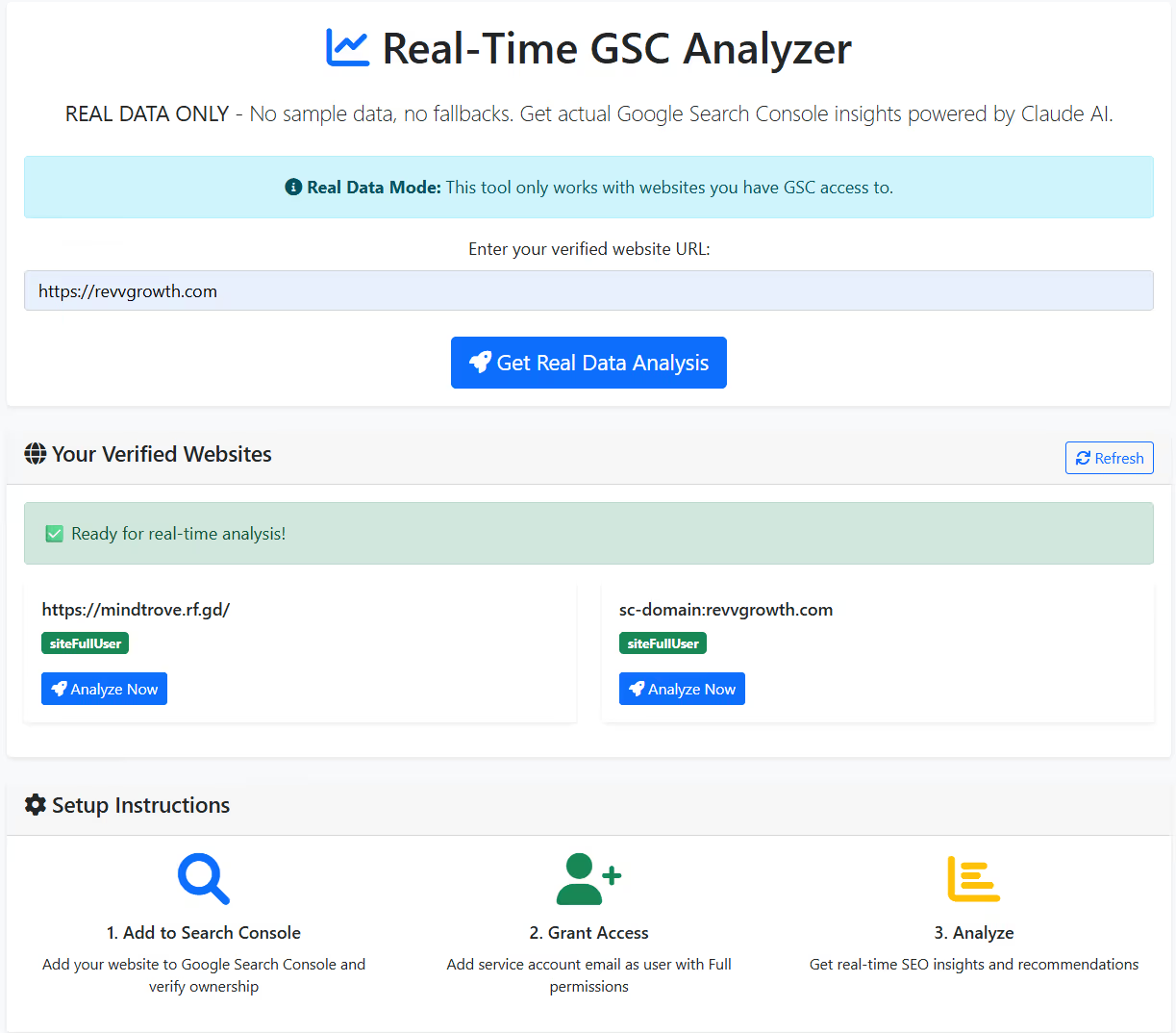
STEP 4. Generated Strategic Insights with Claude AI
This is where things really came together.
We prompted Claude with:
“Act like an SEO strategist. Analyze this GSC data and summarize the site’s performance. Highlight key wins, low CTR areas, and priority actions.”
The result was exactly what we needed: concise, human-readable summaries that offered a high-level snapshot of performance, clearly outlined what was working well, pointed out areas that needed improvement, and included specific, actionable next steps. Just in case we ever ran into Claude’s API limits, we also built a fallback using a straightforward templated logic layer to ensure the output remained consistent and usable.
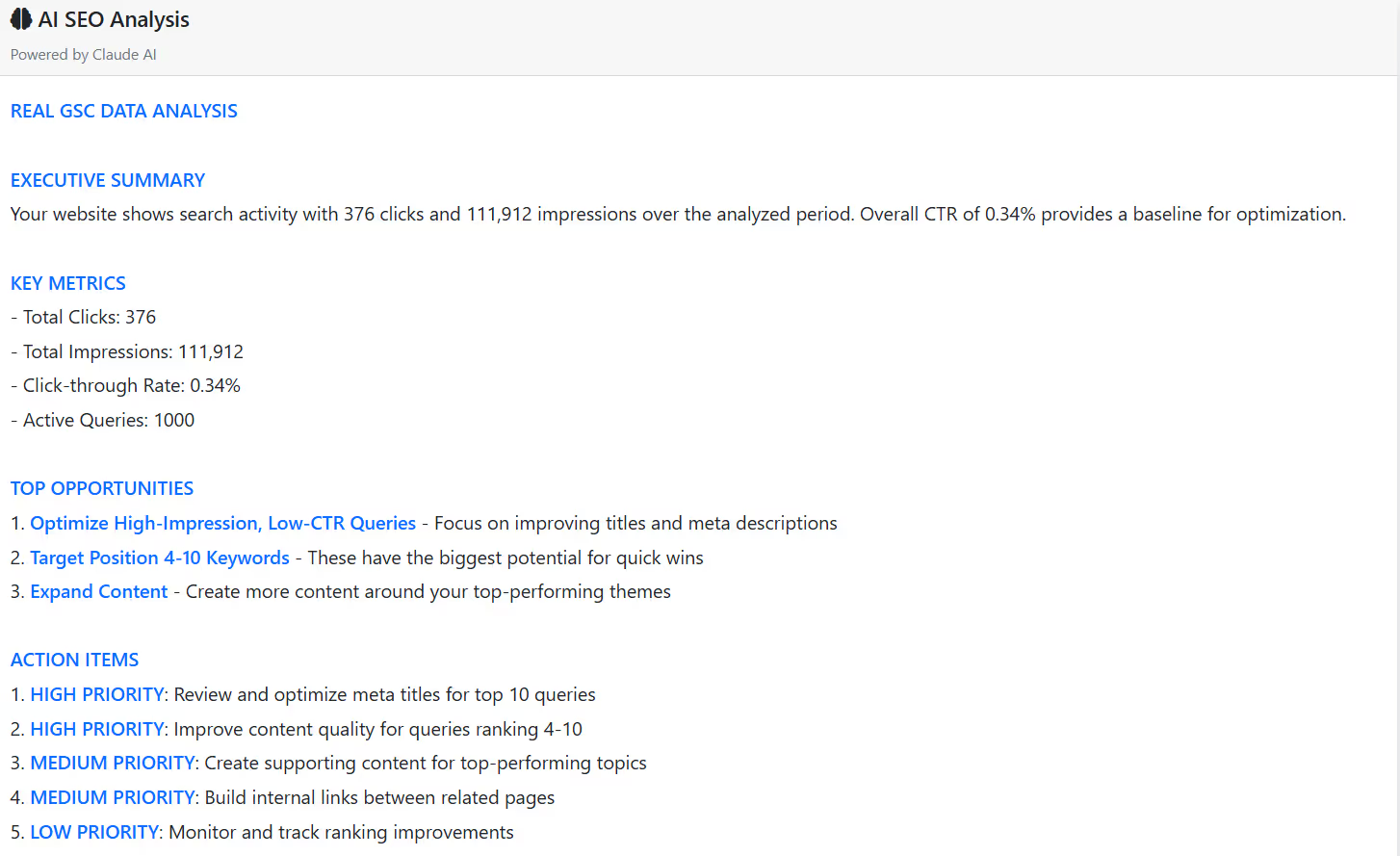
STEP 5. Tested Across Real and Dummy Domains
We ran tests on our website and multiple client environments. The tool handled multi-domain reporting, gracefully skipped empty datasets, and produced consistent summaries without requiring SEO expertise.
How the Tool Changed Our Daily Workflow
Before this tool, I had to ping someone just to fetch GSC metrics. Interpreting them? That took another round of Slack messages and time.
Now, I type a domain, click "Analyze," and get a strategic summary in seconds. No bottlenecks. No back-and-forth. And the best part is even team members without SEO knowledge can understand and act on the data. It gave every team member the clarity of an SEO expert, without needing one.
Lessons for SEO Teams Driving Growth in SaaS
If you're leading growth or building a product, your team needs answers, not just numbers. GSC is powerful but only if it tells you what to do next. Our system bridges that gap. Now, I check the performances every morning. I know which queries to target, which pages need help, and what trends are emerging. That knowledge flows into:
- Content prioritization
- Feature launches
- Campaign messaging
All without staring at dozens of charts.
Final Thoughts: Build Systems That Talk to You
I’ve always believed tools should remove friction, not add to it. This may look like a small internal project but it transformed how we think about SEO reporting. It saved us hours, surfaced better insights, and made performance data feel actionable. And that’s the bar. Your systems should talk to you in plain English. They should help your team move faster and decide with clarity.
Exploring outbound automation in your own team?
We built this internal workflow to save time and improve consistency, and it's been delivering results. If you'd like a closer look at how it works or want to replicate it, feel free to drop me a message or connection request on LinkedIn. We're always up for a good system chat.
- Karthick Raajha
Founder, Revv Growth
FAQs



.svg)
.png)
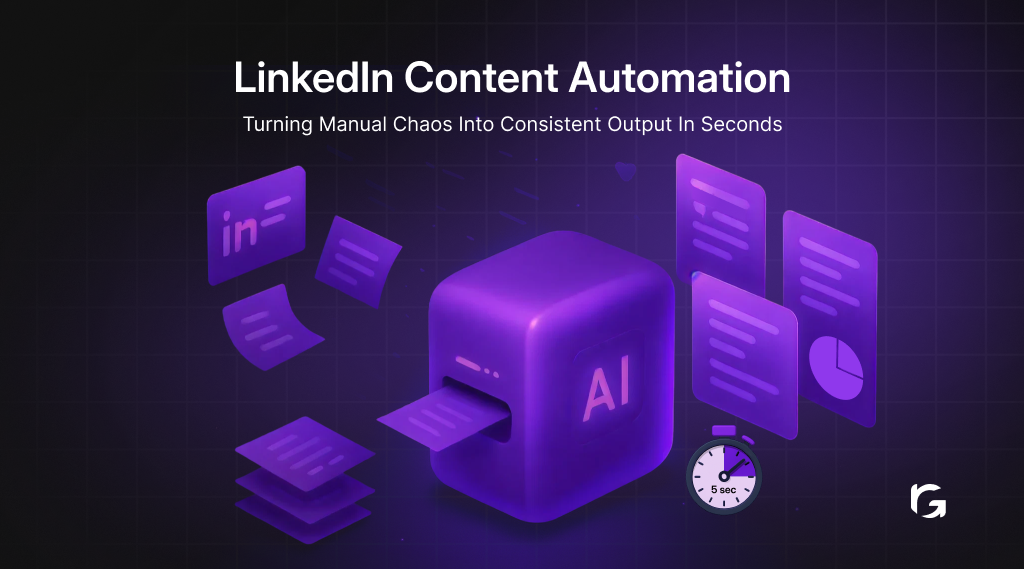
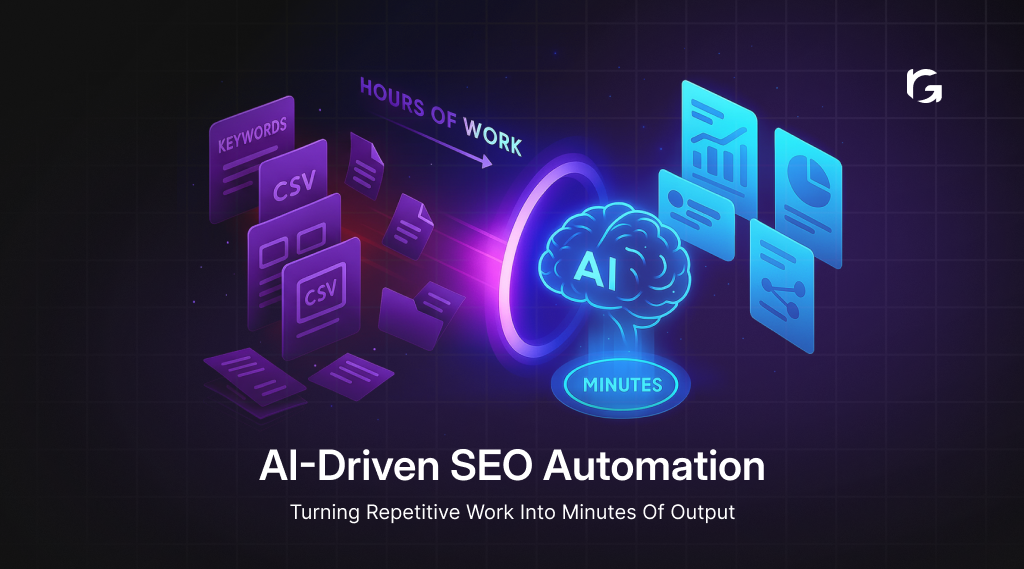
.webp)